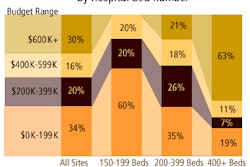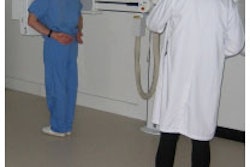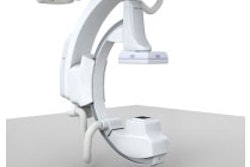Using a "superselective" angiography procedure, Korean interventionalists were able to reduce hepatic injuries during transcatheter arterial chemoembolization (TACE) for the treatment of hepatocellular carcinoma (HCC) and metastatic liver disease.
The trick is to use this angiographic technique to identify nonhepatic arteries arising from the hepatic arteries, wrote Dr. Soon-Young Song and colleagues in the Journal of Vascular and Interventional Radiology. At the time of the study, Song and his colleagues were based at the Seoul National University College of Medicine and Hospital. Song subsequently moved to Hanyang University Hospital in Seoul.
"The right gastric artery (RGA) and the accessory left gastric artery (LGA) frequently arise from the hepatic arteries," they explained. "Gastroduodenal mucosal lesions may result from accidental infusion of chemoembolic agents into gastric or duodenal arteries originating from the hepatic arteries" (JVIR, March 2006, Vol. 17:3, pp. 461-469).
The purpose of the study was twofold: to evaluate the prevelance and pattern of nonhepatic artery origins, and to assess their relationship to anatomic variation of the celic axis and hepatic arteries on angiography.
The patient population consisted of 250 patients with suspected or proven HCC. All underwent contrast-enhanced (Ultravist 370, Schering AG, Berlin) celiac axis arteriography and selective left hepatic arteriography on one of two digital subtraction angiography units (Angiostar, Siemens Medical Solutions, Malvern, PA; or V-3000, Philips Medical Systems, Andover, MA).
Song with co-authors Dr. Jin Wook Chung and Dr. Hyung Guhn Lim interpreted the images in consensus. In addition to identifying the RGA and LGA on the arteriograms, they looked for the posterior superior pancreaticoduodenal artery (PSPDA) and the left interior phrenic artery (LIPA).
"We adopted the term 'proper hepatic artery (PHA) equivalent' in this study.... We assumed that when the PHA was absent as a result of an aberrant hepatic artery origin, the first arterial trunk arising from the common hepatic artery (CHA) is equivalent to the PHA found in patients with ... conventional anatomy," the authors wrote.
According to the results, 62.8% of the 250 patients had conventional celiac axis and hepatic artery anatomy and 69% had a PHA. The other 37.2% had variations of the celiac axis or hepatic artery, and 31% did not have a PHA. The RGA was found all 250 patients; the HFA was visualized in 51.6%.
"The most common nonhepatic artery was the RGA in 78.4% of the patients, followed by the HFA in 52%, the accessory LGA in 17.2%, the PSPDA in 7.2%, and the LIPA in 2%," the authors stated.
"Our results also showed that the PHA or its equivalent was the common origin of the RGA and that the LHA was the second most common," they added. "In cases with arterial anatomic variation, the RGA more frequently arose from the PHA."
The authors explained the significance of the various arteries during TACE. The RGA (as well as the accessory LGA) are often overlooked because of their small size. With regard to the HFA, exposure to toxic TACE chemicals through this artery may cause a skin rash or act as an unwanted pathway to the liver.
Finally, "it should be noted that unintentional embolization of the PSPDA arising from the PHA or RHA during TACE ... may induce pancreatitis or duodenal mucosal injury," they stated.
The group concluded that there was a considerably high prevalence of nonhepatic arteries arising from hepatic arteries and that some of these vessels can only be detected with microcatheter superselective angiography. To identify these arteries, careful analysis of celiac axis arteriograms and superselective angiograms will be necessary.
By Shalmali Pal
AuntMinnie.com staff writer
April 28, 2006
Related Reading
CEUS outshines three-phase CT in assessing HCC TACE response, March 31, 2006
Detection of liver metastases with contrast-enhanced ultrasound, March 23, 2006
Korean investigators share angiographic pitfalls of HCC, March 29, 2003
Copyright © 2006 AuntMinnie.com



















